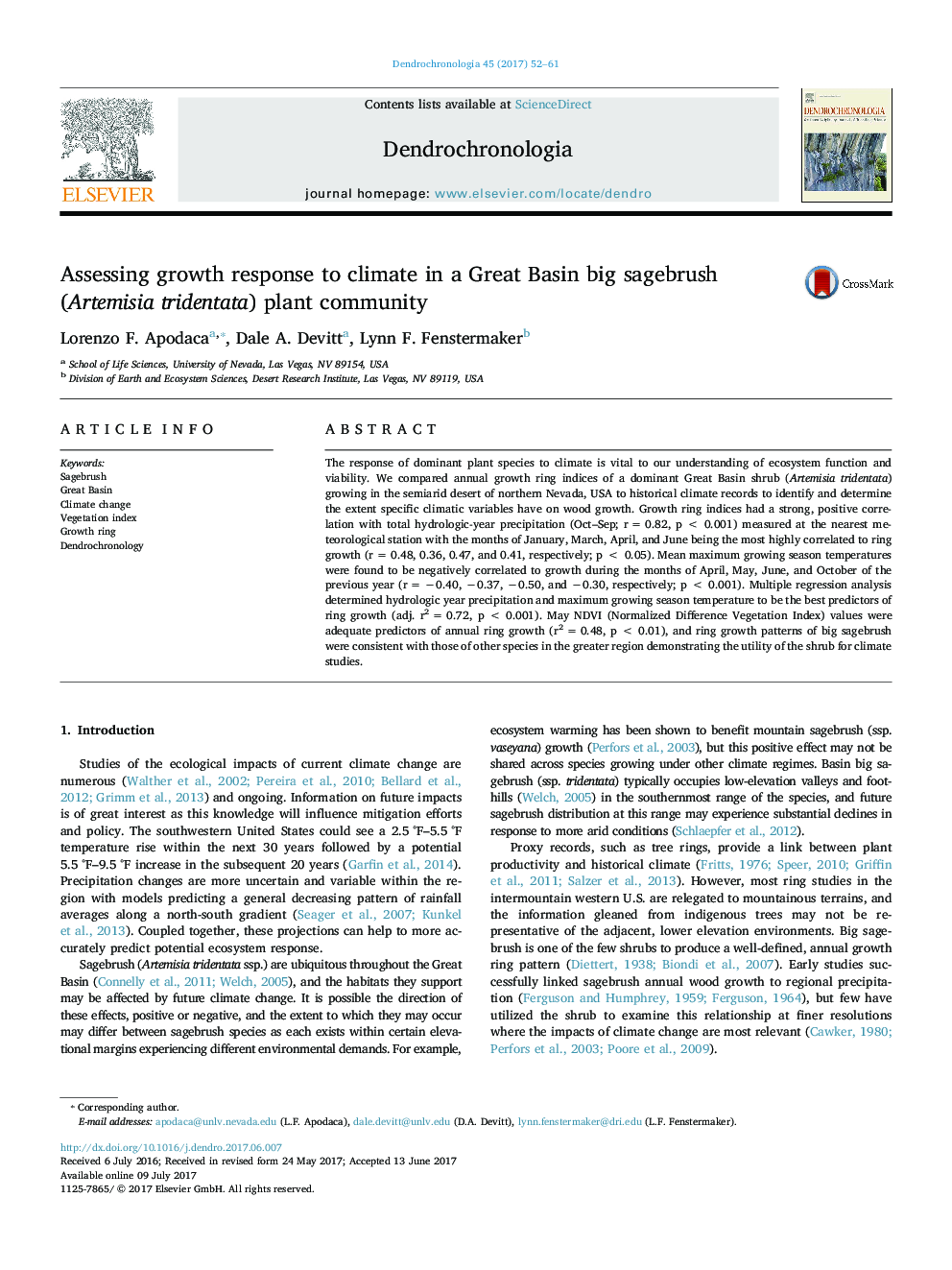| Article ID | Journal | Published Year | Pages | File Type |
|---|---|---|---|---|
| 6458970 | Dendrochronologia | 2017 | 10 Pages |
The response of dominant plant species to climate is vital to our understanding of ecosystem function and viability. We compared annual growth ring indices of a dominant Great Basin shrub (Artemisia tridentata) growing in the semiarid desert of northern Nevada, USA to historical climate records to identify and determine the extent specific climatic variables have on wood growth. Growth ring indices had a strong, positive correlation with total hydrologic-year precipitation (Oct-Sep; r = 0.82, p < 0.001) measured at the nearest meteorological station with the months of January, March, April, and June being the most highly correlated to ring growth (r = 0.48, 0.36, 0.47, and 0.41, respectively; p < 0.05). Mean maximum growing season temperatures were found to be negatively correlated to growth during the months of April, May, June, and October of the previous year (r = â0.40, â0.37, â0.50, and â0.30, respectively; p < 0.001). Multiple regression analysis determined hydrologic year precipitation and maximum growing season temperature to be the best predictors of ring growth (adj. r2 = 0.72, p < 0.001). May NDVI (Normalized Difference Vegetation Index) values were adequate predictors of annual ring growth (r2 = 0.48, p < 0.01), and ring growth patterns of big sagebrush were consistent with those of other species in the greater region demonstrating the utility of the shrub for climate studies.
